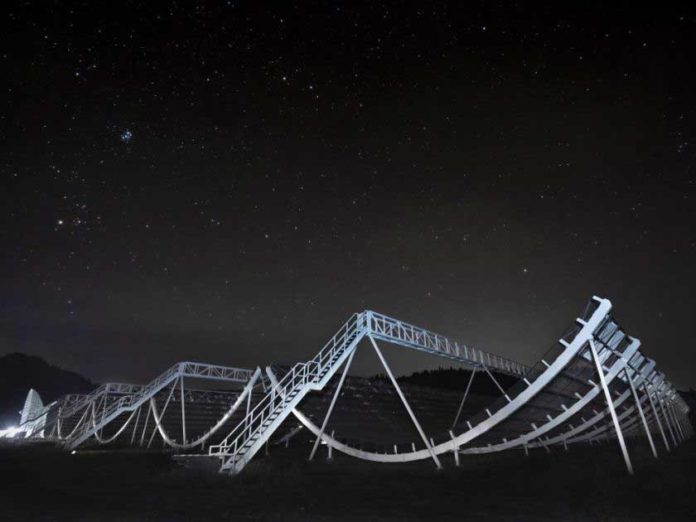Fast Radio Bursts or FRBs are very short and extremely high-power bursts of radio energy that we detect in our telescopes here on Earth. They typically last only a few milliseconds and are usually broadband (which means they cover a range of frequencies). The burst is generally a single spike of energy, which is stable and constant over its brief duration.
FRBs, in other words, are some of the most enigmatic phenomena in astronomy. Scientists are still unaware of where they come from, or what celestial event could be so dramatic yet common enough to produce thousands of bursts every day.
But, now scientists think- they are closer to answer.
At the winter meeting of the American Astronomical Society this week, scientists at a powerful new Canadian telescope announced the detection of 13 new fast radio bursts (FRBs) in a mere two months of observations. One of the newly detected bursts is a rare “repeater” — scientists saw six flashes coming from the same spot in the sky, which they hope will make it easier to pin down the source of the signal. Only one other repeating FRB has ever been found.
The repeater, as it is called, and its 12 counterparts came from a region of space some 1.5 billion light-years away, reported scientists. All 13 new bursts have the lowest radio frequency yet detected, but they were also brighter than previously seen fast radio bursts, leading the team to think the low frequency has something to do with the sources’ environment.
McGill University’s Shriharsh Tendulkar said, “These things are coming to us from halfway across the universe and we don’t really know anything about them. Isn’t that exciting?”
The radio waves get twisted as they travel through space and can scatter or be absorbed by gas and plasma. The team, therefore, thinks that all 13 bursts likely originated from dense, turbulent regions inside of their host galaxies, particularly areas with a lot of violent acts, such as near dense supernova remnants or close to black holes.
Moreover, scientists noticed that the repeated burst has the same structure as the only other repeater ever found.
Tendulkar said, “The fact that we see these multiple structures in the burst was very similar to the first repeating fast radio burst. This is very uncommon. Now there is this tantalizing evidence that these bursts’ structures are seen only in repeaters. That suggests that if more fast radio bursts are found with that structure, they may be prime candidates for also being repeaters.”
“We are trying to build up clues and trying to understand whether the repeating fast radio bursts and single fast radio bursts are different populations. Do they come from different objects? Or are they related in some way to each other? We are trying to figure these things out, so that’s really exciting.”
When CHIME detected these new bursts, it was only running at a fraction of its capacity, and the team is excited to see how many more will appear in their data now that the instrument is fully up and running.
Shami Chatterjee, a senior researcher at the Cornell Center for Astrophysics and Planetary Science said, “The CHIME discovery points to a huge potential. I’m intensely curious how many [fast radio bursts] they are sitting on now. They must have dozens or hundreds.”
The study is published in the journal Nature.
